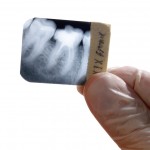
The aim of this review was to assess the scientific evidence on the efficacy of low-level laser therapy (LLLT) in the treatment of temporomandibular disorders (TMD). The authors searched the PubMed, Science Direct, Cochrane Clinical Trials Register, and PEDro databases. Papers were screened, extracted, and quality assessed independently by two reviewers. A meta-analysis- was performed [read the full story…]







